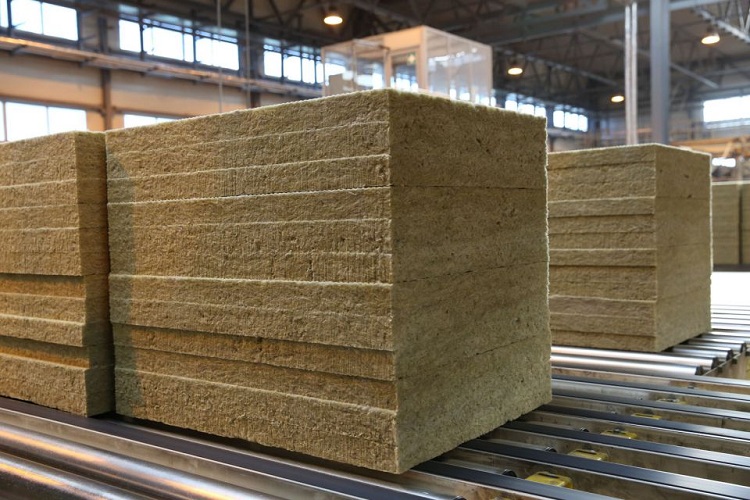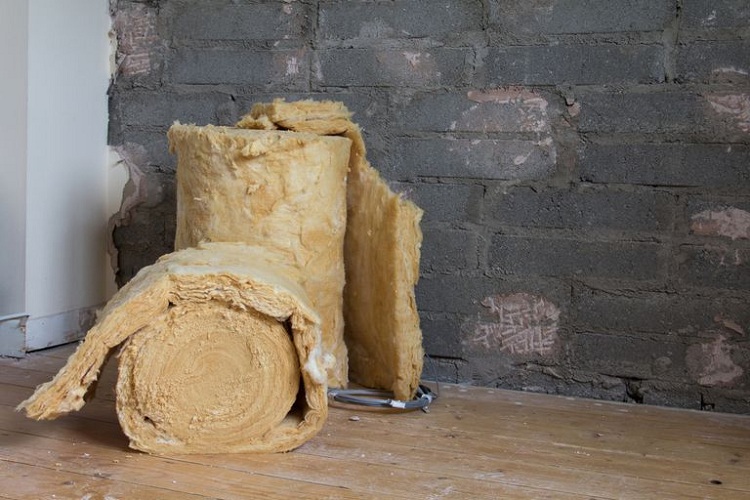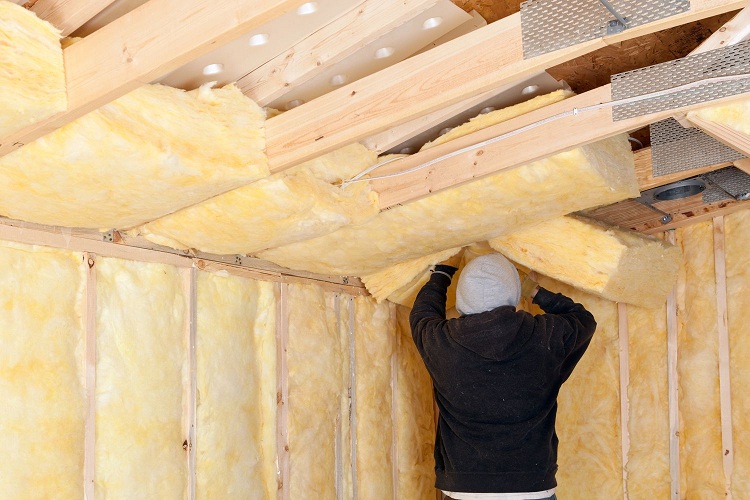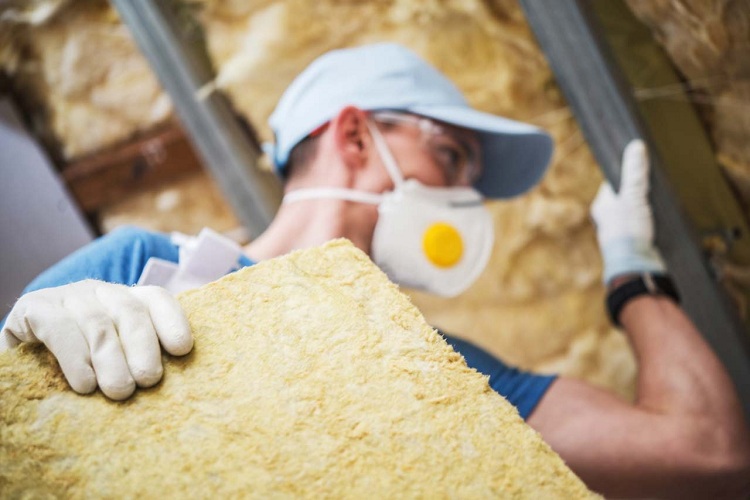Noise drives some people nuts, driving them to look for the best soundproofing materials on the market.
Soundproofing your car, home, office, garage door, driveway, and clocks are popular ways to create a pleasanter living environment where peace prevails.
Here we examine rock wool vs. fiberglass properties to understand the similarities and differences between these two sound-deadening materials.
Rock wool has specific characteristics that fiberglass does not. These products also share similarities, making it challenging to understand which is best to use in the home.
Rock wool vs. fiberglass–which is the better soundproofing material and why? Let’s find out…
What is rock wool?

Rock wool is made from rocks and is also known as mineral wool. This product is available in the same form as fiberglass. Rock wool is produced by heating rocks up to 3,000 °F, effectively transforming hard rock into a liquid form.
Once liquidized, air or steam is jetted into the liquid under high pressure and turned at high speed. Consequently, the liquid transforms into elongated strands of fiber.
These fibers then undergo a compression process to make dense mats which are cut into strips known as batts.
Rock wool batts are popular for their insulating, thermal, waterproofing, and fire protection properties.
Rock wool is durable, with a long lifespan, is resistant to mold buildup due to its water-repelling properties. This product comes from natural sources and contains 75% of recyclable materials, making this sustainable for many purposes.
What is fiberglass?

Manufacturers use ordinary glass to produce fiberglass. Like rocks are heated to make rock wool, glass is heated at extreme temperatures to create fiberglass.
Once the glass is hot, it turns into a liquid and is compressed through tiny holes to develop fiberglass filaments. These fiberglass filaments are so fine that they are measured in microns.
Fiberglass filaments are long or short, and the quality of the product varies and can undergo additional processes to remove impurities to increase the quality level.
After manufacturing the filaments, the manufacturers package them in various forms for insulation. Fiberglass filaments are packaged into rolls, while others are packaged into denser materials.
Fiberglass is popular as insulation, thermal, and corrosion-resistant material. This fiber-reinforced plastic type of material is also highly versatile, and many industries use this sound-deadening material for many reasons.
Comparison
One way to understand rock wool vs. fiberglass is to compare the similarities and differences between these products.
These two products are more similar than they are different, and these variables are covered in relation to:
- Acoustic performance
- Fire safety issues
- Thermal characteristics
- Sustainability elements
- Their environmentally friendly status
- Durability and strength
- Breathability
- Weight and fitting
- Health and safety
- Costs
Similarities
Acoustic performance

Understanding rock wool vs. fiberglass in terms of their acoustic capabilities shows the similarities between these two materials.
Rock wool is a high-performing soundproofing material. Rock wool effectively quells the vibrations that emanate from airports, trains, music studios, and other sources.
This product is porous and captures and manages vibrations that produce noise. Likewise, fiberglass is also porous, so its little air pockets are also good at deadening sounds.
Fire safety features
Manufacturers use natural materials to create rock wool and fiberglass, which both have a built-in resistance to fire. Rock wool absorbs heat and prevents the spread of fire.
Fiberglass also does not ignite when exposed to heat, so it is not a catalyst for fires. Neither of these products generates toxic smoke or other harmful substances.
Thermal characteristics
Both products retain heat, so they are used for thermal insulation, promoting a cool environment in summer and a warm one in winter.
Sustainability elements
All rock wool is made from natural rocks, and 75% of the product is recyclable, making this a sustainable soundproofing product.
However, only ¾ of this product is recyclable, begging the question as to whether it is environmentally friendly. But rock wool is made from rocks that are available in abundance.
Fiberglass is made from glass, which is made from sand. There is a lot of sand on earth, making fiberglass a sustainable product.
Environmentally friendly
Despite rock wool vs. fiberglass being made from natural materials, the manufacturing process and additives are not that environmentally friendly.
In other words, while the foundations of these products are sustainable, the manufacturing process still leaves a carbon footprint, making these products similarly unfriendly to the environment.
Differences
Acoustic properties

Where rock wool can manage sounds up to 10 decibels, fiberglass controls noise vibrations in the range of 4 to 10 decibels.
Durability and strength
Rock wool is durable and has a lengthy lifespan in comparison to fiberglass. Rock wool is also a strong material and outlasts fiberglass, which is prone to degradation over time.
Breathability
Rock wool is a breathable material, which means it has excellent ventilation properties. This breathable feature allows air and moisture circulation, so neither mold nor mildew grows on this material.
Fiberglass is also breathable due to its porous nature, so it is resistant to mold and mildew growth. The backing of fiberglass is made from a paper source, attracting mold growth.
Weight and fitting
Rock wool weighs more than fiberglass and is stiffer than fiberglass. Rock wool’s weight and firmness make it easier to install than fiberglass.
Health and safety
Inhaling microscopic fiberglass fibers can cause eye irritation, coughing, a sore throat and nose, and stomach irritation if swallowed.
Fiberglass attracts mold, which can be a disease source, whereas rock wool repels mold growth. Inhaling rock wool also does not cause long-term health issues other than some mild irritation from inhaling rock dust.
Costs
The primary difference in rock wool vs. fiberglass is that rock wool wins hands down as being far more expensive than fiberglass.
Which one is better for soundproofing?

Both rock wool and fiberglass are easy to cut and install. But where rock wool offers up to 10 decibels of noise reduction, fiberglass provides a range of noise reduction between 4 and 10 decibels.
Rock wool can reach prices that are double that of fiberglass. Rock wool is also more durable than fiberglass, which degrades quickly.
In terms of health and rock wool vs. fiberglass, neither are particularly harmful to human health.
Rock wool appears to have a slight upper hand in that it is moisture resistant. However, a fiberglass backing attracts mold growth.
The sustainable and environmentally friendly elements of the two products are comparable.
It is easy to cut and size rock wool and fiberglass to fit any space, which is one more reason that these materials make popular insulation materials.
However, rock wool is slightly heavier and firmer than fiberglass, making it easier to install rock wool.
The most significant difference between rock wool vs. fiberglass is its cost. Rock wool can cost twice as much as fiberglass.
When evaluating which product is better for soundproofing–the shortest response is that rock wool wins the race.
Rock wool is better than fiberglass in its acoustic performance, longevity, and health issues.
But if the price isn’t an issue for you, then rock wool is a better soundproofing material than fiberglass.
Conclusion
Rock wool and fiberglass are made from natural materials, and both have insulating properties. Reading the similarities and differences of the two soundproofing materials should give you an idea of which is better.
However, ‘better is a relative term, and when it comes to rock wool vs. fiberglass, you should weigh variables such as cost and purpose.
Once you decide on the variables, you will know which product is better for you.
Overall, though, rock wool is the better soundproofing material, but it is also more expensive. If the price of rock wool syncs with your budget, it is the better soundproofing material of the two materials.
Resources:
